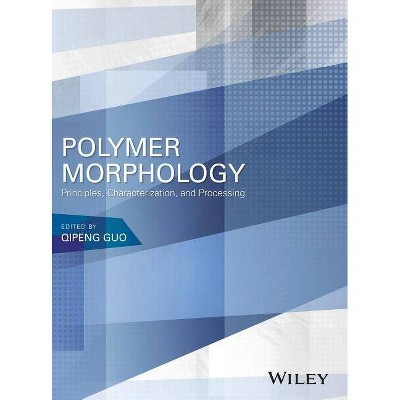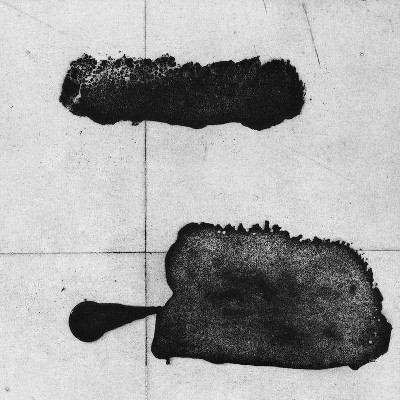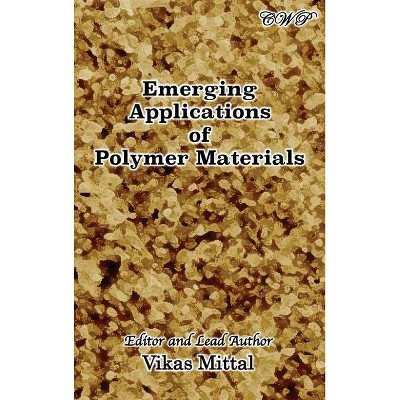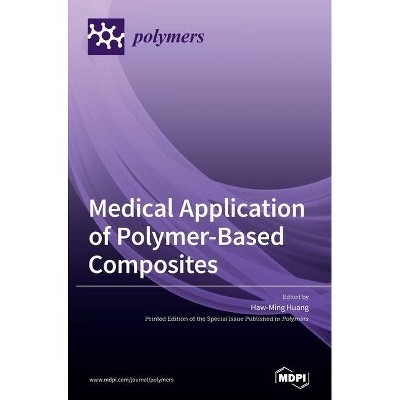Polymer Morphology - by Qipeng Guo (Hardcover)

Similar Products
Products of same category from the store
AllProduct info
<p/><br></br><p><b> Book Synopsis </b></p></br></br><p>With a focus on structure-property relationships, this book describes how polymer morphology affects properties and how scientists can modify them. The book covers structure development, theory, simulation, and processing; and discusses a broad range of techniques and methods.</p> <p>- Provides an up-to-date, comprehensive introduction to the principles and practices of polymer morphology<br />- Illustrates major structure types, such as semicrystalline morphology, surface-induced polymer crystallization, phase separation, self-assembly, deformation, and surface topography<br />- Covers a variety of polymers, such as homopolymers, block copolymers, polymer thin films, polymer blends, and polymer nanocomposites<br />- Discusses a broad range of advanced and novel techniques and methods, like x-ray diffraction, thermal analysis, and electron microscopy and their applications in the morphology of polymer materials</p><p/><br></br><p><b> From the Back Cover </b></p></br></br><p>Polymer morphology refers to the overall form of a polymer structure, the arrangement and microscale ordering of polymer chains in space. Molecular shapes and arrangement have major impact on the macroscopic properties of polymers - in effect, understanding these important factors helps scientists efficiently process polymeric materials. In addition to formation processes, morphology also deals with physical properties, product performance, and the impact that process techniques have on properties. Understanding polymer morphology can ultimately help scientists achieve ideal properties and applications of polymeric materials.</p> <p>With a focus on structure-property relationships, Polymer Morphology: Principles, Characterization, and Processing covers structure development, theory, simulation, and processing; and discusses a broad range of techniques and methods. Divided into two parts, Principles and Methods of Characterization and Morphology, Properties and Processing, this book illustrates methods and techniques through theory and examples that aid the reader in understanding polymer morphology and how to utilize structure to determine properties and manipulate applications.</p> <p>The chapters in Part 1 present various methods of polymer morphology: x-ray diffraction, electron microscopy, scattering techniques, thermal analysis, imaging using atomic force microscopy, NMR analysis and infrared spectroscopic imaging of polymeric materials. Part 2 covers structure development, theory, simulation, and processing; and features chapters on semicrystalline morphology, crystallization kinetics, surface induced polymer crystallization, microphase separation, self-assembly, phase separation, thin fim morphology, surface topography, nanomechanical mapping, deformation, processing, and other formations.</p> <p>For practicing polymer scientists in academia or industry, Polymer Morphology offers a valuable one-stop reference and resource that: </p> <p>Provides an up-to-date, comprehensive introduction to the principles and practices of polymer morphology<br />Covers a variety of polymers, such as homopolymers, block copolymers, polymer thin films, polymer blends, and polymer nanocomposites<br />Describes how polymer structure affects properties<br />Illustrates major structure types and discusses a broad range of advanced and novel techniques and methods</p><p/><br></br><p><b> About the Author </b></p></br></br><b>Qipeng Guo, DSc, DEng</b>, is the chair professor in polymer science and technology at Deakin University, Australia, where he was awarded a Personal Chair in recognition of his distinguished achievements and international reputation in polymer research, involving both the fundamental principles in polymer science and the development of new polymer materials. He is a Fellow of The Royal Society of Chemistry.
Price History
Price Archive shows prices from various stores, lets you see history and find the cheapest. There is no actual sale on the website. For all support, inquiry and suggestion messagescommunication@pricearchive.us




















